The rondo has become a classic in football training and nearly every coach has already used rondos in training sessions. But why have rondos become so popular and what makes them so effective in football training?
In the following analysis, we aim at explaining the basic principles of rondos in football training and their advantages. Moreover, we are going to provide some rondo variations which can be of use for your football training.
The definition of the rondo
The term “rondo” appears regularly, whether on a professional level or on a grassroots level. Basically, the rondo is a game with the team in possession of the ball having numerical superiority. The main goal for the team with the ball is to maintain possession and circulate the ball whereas the outnumbered opposition attempt to win the ball.
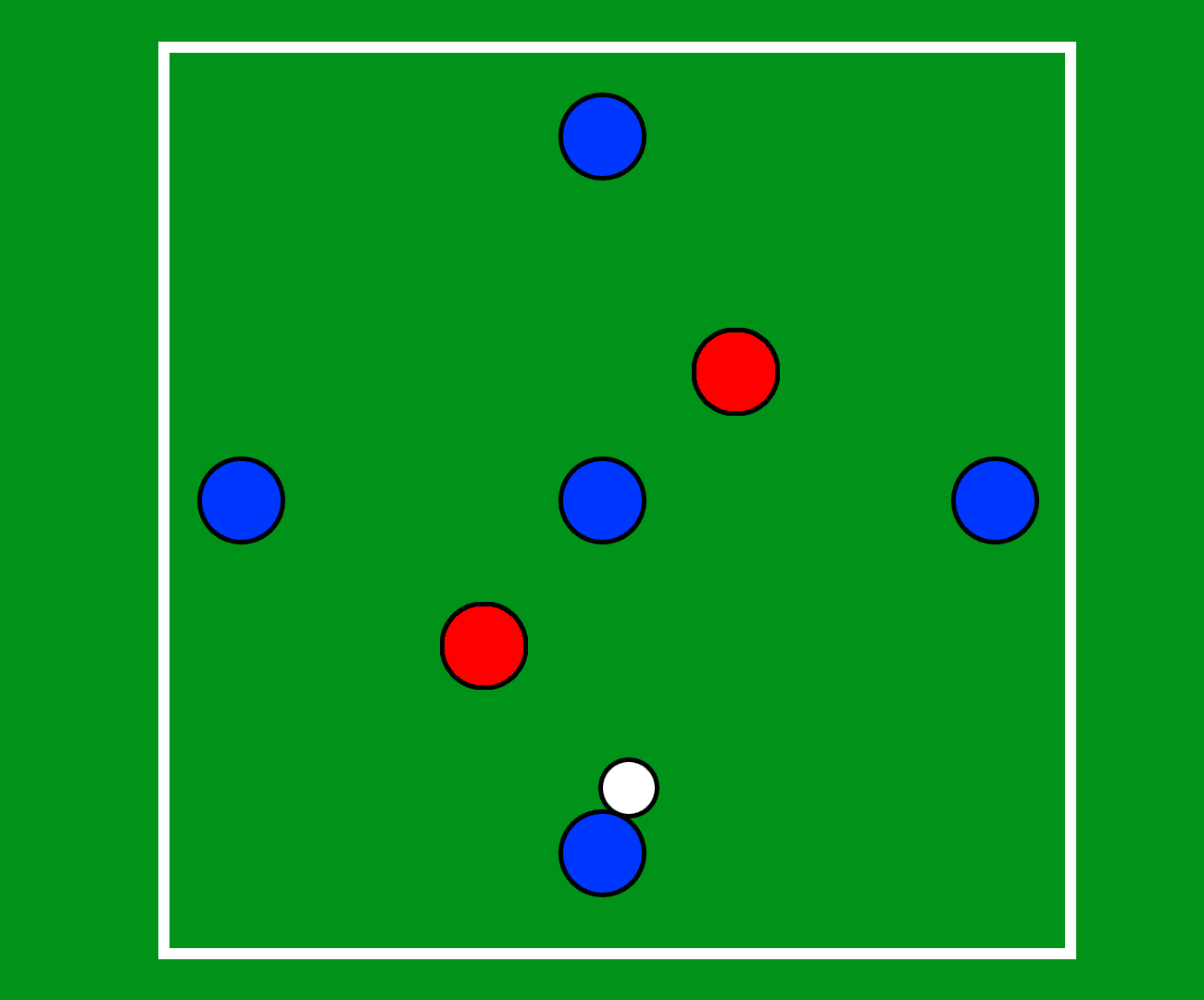
Above, one can see one of the simplest rondo forms (5v2). This variation contains the most fundamental aspects of a rondo (two sides with one being in possession with a numerical superiority) with a relatively low complexity. This form is often used during warm up to mentally and physically prepare the players for the main part of the session.
Usually, rondos in their purest and most simple form are non-directional and do not include goals. However, more advanced variations sometimes include goals and can therewith be directional as well. And this enables coaches to structure their sessions with progressing rondo variations and to lay the focus on certain principles fitting to the tactics.
The advantages of rondos in football training
In order to understand why the rondo has become so popular and successful in football training, we should listen to the best coaches of the game. Coach legend Johan Cruyff, who implemented the rondo at Barcelona for instance, claimed:
“Everything that goes on in a match, except shooting, you can do in a rondo. The competitive aspect, fighting to make space, what to do when in possession and what to do when you haven’t got the ball, how to play ‘one touch’ soccer, how to counteract the tight marking and how to win the ball back.” (in “Our Competition is the World” – Stan Baker)
To evaluate whether the rondo is an effective training method, we should also think about the aspects which should be practiced. Everything which is asked from the players during competition should also be part of the training. One can divide the game into a technical, a tactical, a physical and a psychological component. All of these components are part of the rondo. Whereas technique is mainly needed for the ball circulation (passing technique), the tactical component is required during the pressing as well as to make decisions in possession. Since both sides have a clear task to fulfil which conflict with the task of the opposition, the rondo also includes psychological aspects such as team-building. Last but not least, the rondo is connected with physical demands which are connected with the task and therewith also with the certain phase of the game. Whereas the team in possession can use ball circulation to tire the opposition and move within their positions to take advantage of their numerical superiority, the outnumbered side chase the ball and have to press with a high intensity. Nevertheless that all of these components are included within the rondo is not a unique feature yet.
According to René Marić, football practices should ideally be football specific, holistic, complex, synergistic and differential. Rondos can fulfil all of these aspects as they are often directly extracted from the game,
Also, if we analyse the rondo on the aspects of Raymond Verheijen’s football action model, it becomes clear that rondos are advantageous for player development.
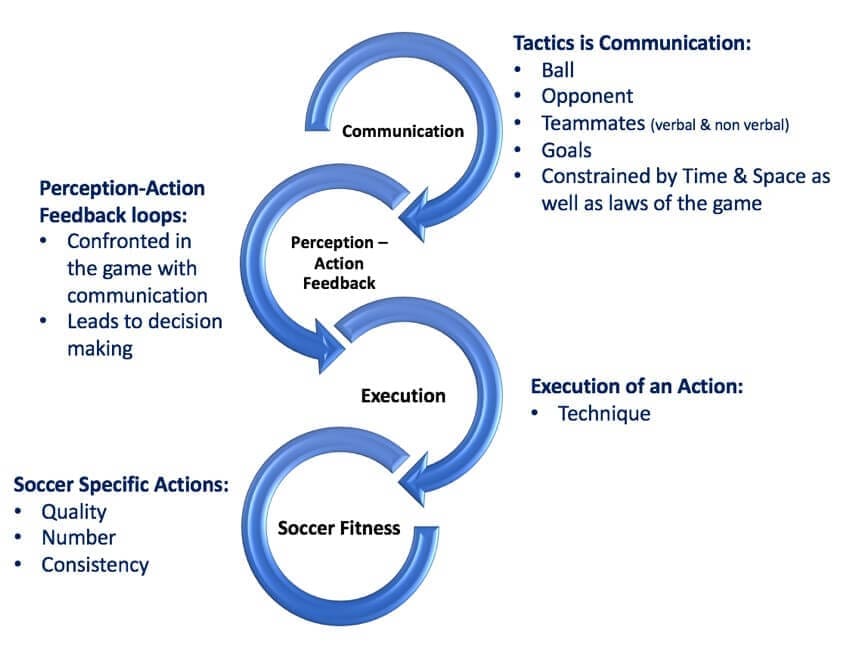
In the rondo communication is required and ball, opponents and teammates are all reference points for the decision-making process. Moreover, functional technique is required to execute the actions. And, when using rondos in football training, the number of “soccer specific situations” is comparably high.
Even if there is a heavy numerical advantage in some rondo variations, they still enable the players to get an understanding of the idea laying behind certain principles while unopposed practices often cannot create this understanding as they neglect one of the most important variables in football: opposition players. Opponents play a huge role when it comes to decision-making as the following study results show (Roca et al, 2013).
Skilled players fixate on:
1. Player in possession
2. Opponents
3. Space
4. Teammate
5. Ball
Less skilled players fixate on:
1. Player in possession
2. Ball
3. Opponents
4. Teammate
5. Space
Roca et al (2013)
— Gavin Murphy (@gmurphycoaching) March 16, 2020
As proven by the study (Roca et al, 2013), opponents are the second most important reference point when it comes to decision-making. Therefore, it is necessary to include opposed practices in training as much as possible when implementing or practicing certain principles.
However, if coaches misinterpret the idea behind the rondo, the advantages can also turn into disadvantages. Often, coaches think that the rondo is just about ball circulation, passing and the creation of triangles. This often ends up in a team circulating the ball in a 8v2 without even needing to move out of the cover-shadow as the responsibility of a single player is too low. To avoid ineffective training with rondos, it should be ensured that all actions remain purposeful. Furthermore, the recognition value of all situations should be as high as possible in order to facilitate the translation into the game.
All in all, the rondo has got a lot of potential. By adding a transition phase, for instance, one can increase the cognitive demand for the players and add further principles. In addition to that, a rondo can also be connected with goals and merge into a directional game after a certain goal is achieved. This allows coaches to focus on certain principles while still practicing in match-like scenarios.
And how exactly different rondo variations can be used to successfully teach and practice principles ensuring a good translation onto the pitch will be part of the following coaching paragraph.
Rondo variations to practice principles
To outline the above mentioned advantages, we will provide a few rondo variations for teaching certain principles.
One of the absolute rondo classics is the 4v4+3. With the team in possession being supported by two wall players on each side of the pitch and a central player, the 4v4+3 creates a 7v4 during the possession phases of the game. Played in a rectangular shape, the 4v4+3 offers a simple structure where each players occupies a corner of the pitch. Therewith, this rondo variation is ideal to teach the principles of positional play.
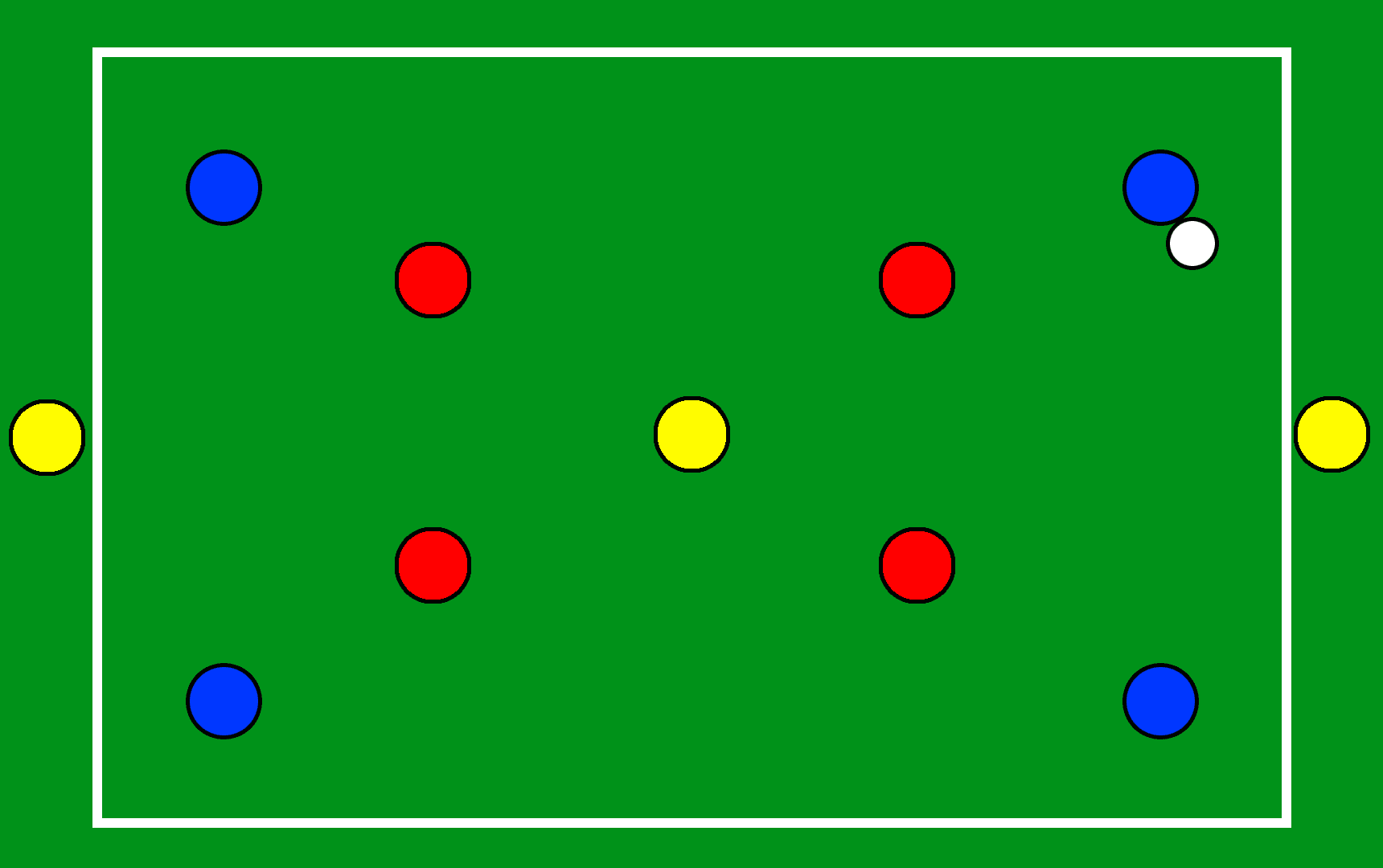
This rondo variation is continuous and therefore displays the stable phases as well as the transition phases of the game similarly as the game itself. This variation is non-directional and the goal is to maintain possession and to points can be rewarded for a certain number of passes.
Another rondo variation with a greater emphasis on switching play is displayed below. In this form, the team in possession is supposed to play a certain number of passes within one half of the pitch before playing into the other half. This adds a directional character to the rondo and the players need to prepare for a quick switch of play after several short passes.
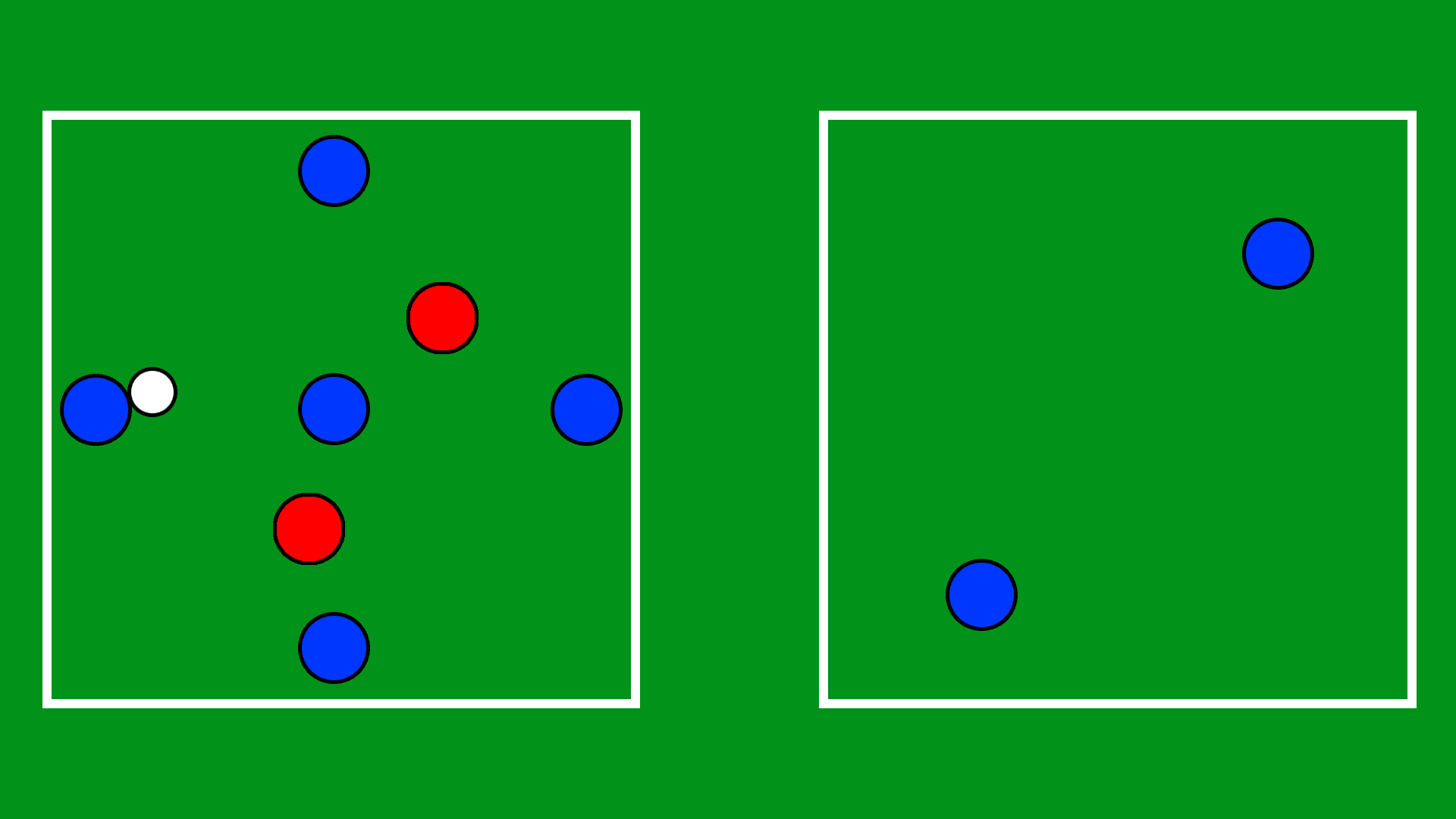
Translated into the “real” game, this variation teaches the principle to attract the opposition towards the ball with short passes followed by a quick switch of play to exploit the created space on the ball far side.
Last but not least, one can also add goals to a rondo and therewith further increase the number of match-like scenarios.
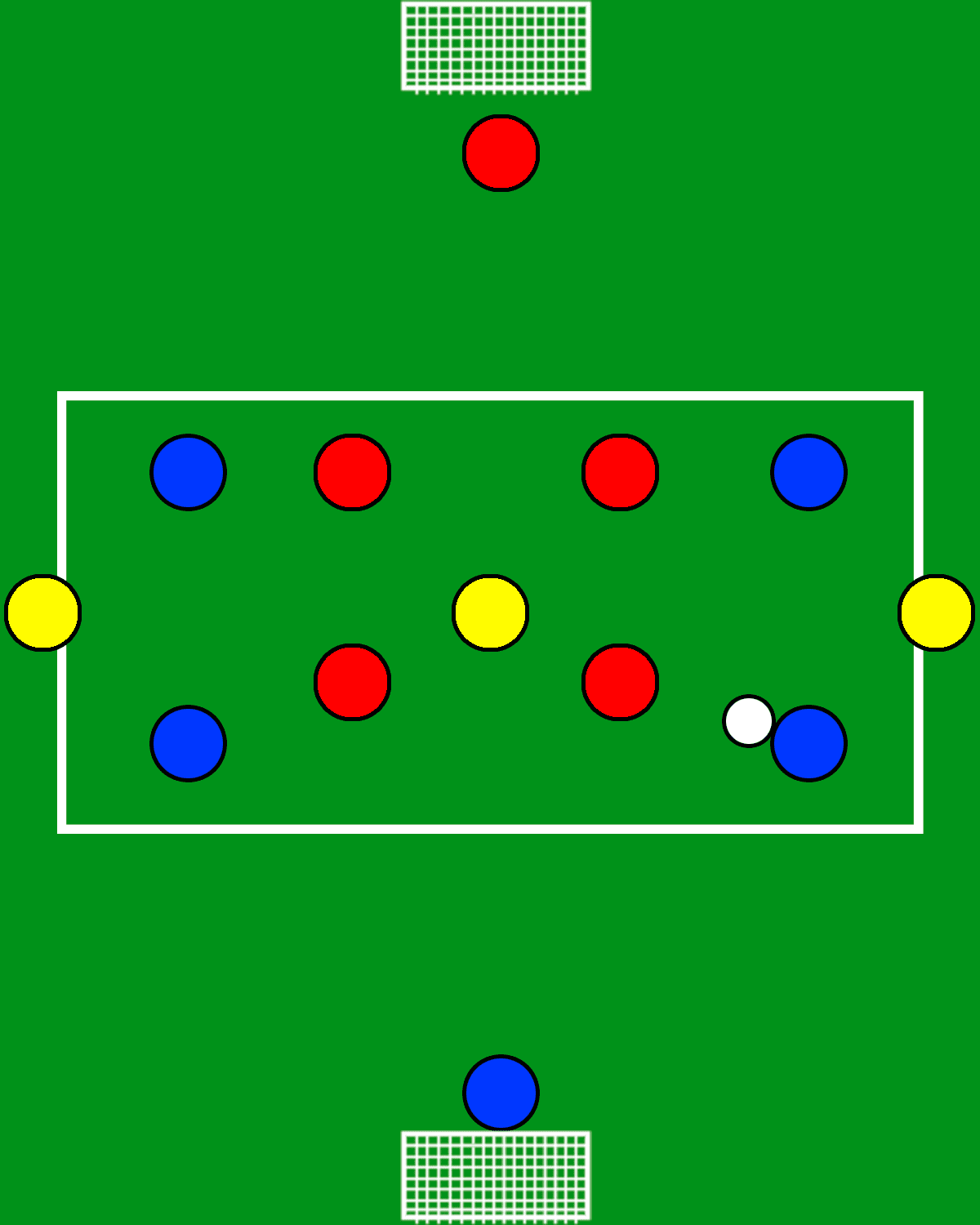
In comparison to the other variations mentioned, this rondo form demands from the players to search for options to penetrate the opposition defensive line. This will teach the players when to maintain possession and when to play vertical through perception-action feedback loops (see Verheijen’s football action model). This means that players will have to perceive all relevant reference points such as opponents, space and teammates and, based on this, execute an action. After the action, they will receive feedback in the form of the success or failing of their action.
In rondos like the last one, it is even possible to practice principles position-specific. The wide yellow players could be wingers for example. Therewith players can gain experience in situations corresponding with certain scenarios happening in the matches. Ideally, this increased position-specific experience also leads to a higher probability of the recognition of certain principles and patterns in the game. As a consequence, the players can use their experience for better decision-making.
Conclusion
To sum up, there appear to be many advantages that come along with the use of rondos in football training. Besides the rondo being football-specific, it also enables the coach to adjust many variables in order to practice certain principles.
It is not a coincidence that the clubs banking on the use of rondos in football training, such as Barcelona, Bayern Munich and Ajax, are amongst the most successful clubs worldwide. However, the initial rondo mainly relying on the principle of maintaining possession has experienced its regression. Rondo variations have been developed which also lay a bigger emphasis on the transition phases or combinations into certain areas with through passes or switches of play. Therefore, the use of rondos in football training provides huge potential, on professional but also on a grassroots level, as all variations can easily be adjusted in terms of their complexity.





Comments